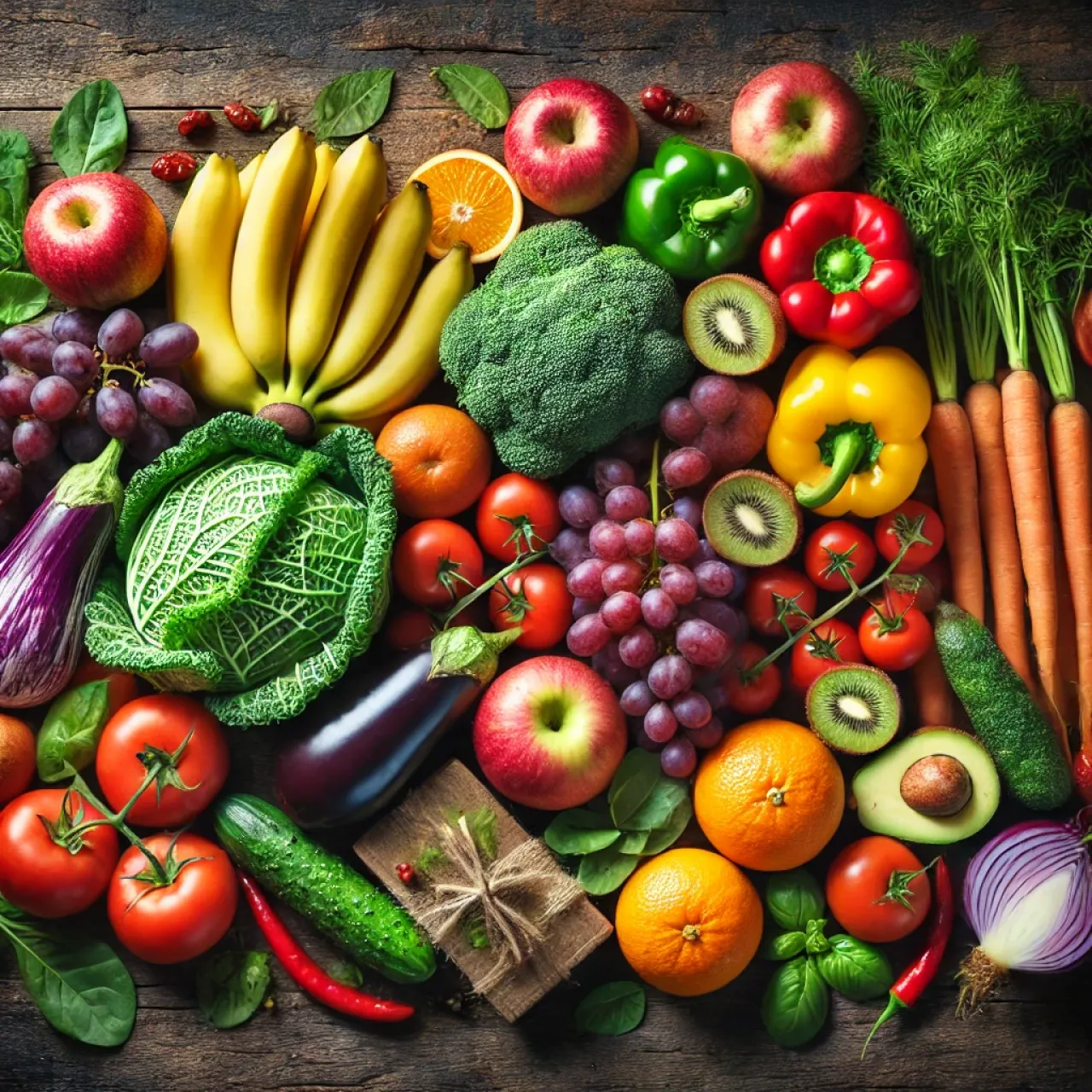Nutritional benefits of coloured Fruits AND vegetables ( Plant nutrients knowns phytonutrients)

Nutritional Benefits of Different Colored Fruits & Vegetables
🔴 Red Fruits & Vegetables
- Contain carotenoids (e.g., lycopene, flavones, quercetin), which act as powerful antioxidants.
- Neutralize free radicals, protecting cells, DNA, and proteins from oxidative damage.
- Help lower inflammation, reduce the risk of heart disease, stroke, and cancer, and slow down aging.
- Lycopene, specifically found in tomatoes, is linked to prostate health and reduced risk of certain cancers.
- Examples: Tomatoes, apples, cherries, strawberries, watermelon, red grapes, red bell peppers (capsicum).
🟠 Orange Fruits & Vegetables
- Rich in alpha and beta-carotene, which convert to vitamin A, crucial for good vision, immune support, and healthy skin.
- Beta-carotene acts as an antioxidant that protects cell membranes from oxidative stress and helps reduce cancer risk.
- Curcuminoids (found in turmeric) have anti-inflammatory properties, benefiting joint health and brain function.
- Examples: Carrots, pumpkins, apricots, mandarins, oranges, turmeric root.
🟡 Yellow Fruits & Vegetables
- Contain lutein, zeaxanthin, and meso-zeaxanthin, which are important for eye health.
- Protect against macular degeneration, a condition that affects central vision with aging.
- These nutrients act as natural UV filters, shielding the eyes from sun damage.
- Also contain vitamin C, which boosts the immune system and helps collagen production for healthy skin.
- Examples: Bananas, apples, pears, lemons, pineapples, yellow bell peppers.
🟢 Green Fruits & Vegetables
- Contain chlorophyll, which supports detoxification and cellular health.
- Rich in folate (vitamin B9), which is essential for DNA synthesis and cell division, making it crucial during pregnancy to reduce neural tube defects in babies.
- Contain catechins and epigallocatechin gallate (EGCG), which promote heart health by reducing blood pressure and improving circulation.
- Help with blood vessel elasticity by encouraging vasodilation, which prevents hypertension and cardiovascular diseases.
- Examples: Avocados, Brussels sprouts, green apples, pears, green tea, broccoli, leafy greens (spinach, kale, lettuce).
🔵🟣 Blue & Purple Fruits & Vegetables
- Rich in anthocyanins and resveratrol, which have strong antioxidant and anti-inflammatory effects.
- Protect blood vessels, reduce the risk of stroke and heart disease, and support brain function.
- Anthocyanins improve memory and learning ability by enhancing brain plasticity and neuron communication.
- Some studies suggest they slow cognitive decline and may reduce the risk of Alzheimer's disease.
- Examples: Blackberries, blueberries, figs, prunes, purple grapes, eggplant.
⚪🟤 Brown & White Fruits & Vegetables
- Contain flavones (e.g., apigenin, luteolin), which have anti-inflammatory and antioxidant benefits.
- Garlic contains allicin, a compound with natural anti-bacterial and anti-viral properties.
- Allicin has been shown to help lower blood pressure by promoting blood vessel relaxation.
- White and brown foods also contain potassium, which regulates blood pressure and muscle function.
- Examples: Garlic, onions, potatoes, bananas, mushrooms, cauliflower.
How to Increase Fruit & Vegetable Intake
- Add a variety of colors to your meals to get a diverse range of nutrients. When shopping, choose fruits and vegetables in different colors (fresh or frozen).
- Try new varieties—experiment with less common fruits and vegetables to expand your diet. Check recipes online for creative ways to prepare them.
- Mix different colors of the same food—e.g., red, green, and yellow apples or white and purple onions.
- Eat the skins whenever possible, as they often contain higher amounts of nutrients (e.g., apple peels are rich in fiber and antioxidants).
- Use herbs and spices—they also contain phytonutrients that enhance both flavor and nutrition (e.g., turmeric, ginger, parsley, and basil).
By eating a coloured fruits and vegetables, you can maximize your intake of essential nutrients, antioxidants, and health-protective compounds, promoting overall well-being and disease prevention. 🌿🥦🍓🍊🍇

